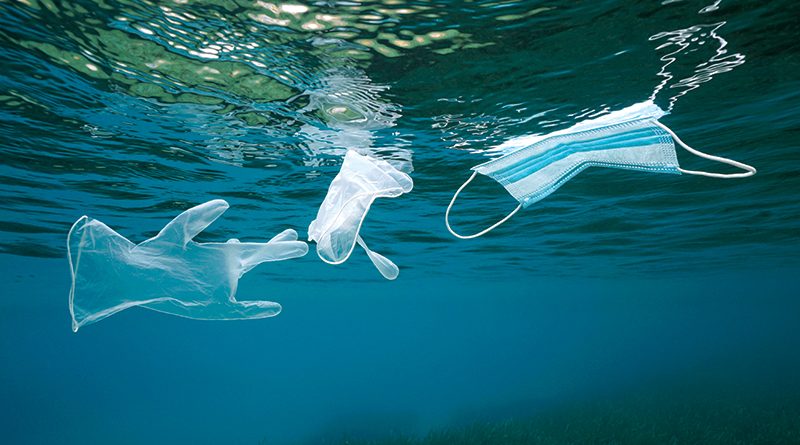COVID-19 PPE Waste and Its Effects on Marine Environments
Two new studies published in 2021, are addressing the increase COVID-19 induced PPE litter and how birds and marine animals have begun to incorporate it into their environments. The studies highlight the need to stay away from single use plastics.
CALIFORNIA—On March 22, a study was published by authors Auke-Florian Hiemstra, Liselotte Rambonnet, and Barbara Gravendeel, that revealed the effects that Personal Protective Equipment (PPE) waste from the COVID-19 pandemic has had on animal life. The study found the first cases of birds using PPE to nest in, and the first case of a fish being entrapped in a plastic medical glove.
As COVID-19 increased the demand for personal protective equipment (PPE), such as masks, gloves, and face shields, pressure has been put on the already out-of-control global problem of marine pollution.
Mismanaged plastic waste, consisting of personal protective equipment has exceeded some country’s capabilities of processing it properly. While many researchers suspect there will be a massive influx of COVID-19 related waste, a second study published by Yiming Peng, Peipei Wu, Amina T. Schartup, and Yanxu Zhang on June 22, from the Proceedings of the National Academy of Sciences of The United States of America (PNAS) is the first to project the magnitude and fate of the waste in the oceans.
“The COVID-19 pandemic has led to an increased demand for single-use plastics that intensifies pressure on an already out-of-control global plastic waste problem,” said Peng and Wu from Nanjing University, the authors of the online journal PNAS. “Plastics have an excellent strength to weight ratio, and they are durable and inexpensive, making them the material of choice for most disposable medical tools, equipment, and packaging.” The COVID-19 pandemic has shown the durability of these plastics and their capability against the ocean.
The study done in March found a fish entrapped in a medical glove and found a protective mask found in the stomach of a dead penguin. The scientists predict that almost all pandemic-related plastics will end up on the seabed or beaches by the end of the century.
The study found that 46 percent of the poorly managed plastic waste came from Asia due to the high level of mask-wearing by its individuals, followed by Europe with 24 percent, and North and South America with 22 percent.
“A dominant fraction (87.4%) of this excess waste is from hospitals, which is estimated based on the number of COVID-19 inpatients and per-patient medical waste generation for each country,” said the study from PNAS. “Individuals who use PPE contributed only 7.6 percent of the total, while packaging and test kits accounted for 4.7 percent and 0.3 percent, respectively…Most of the plastic is from medical waste generated by hospitals that dwarfs the contribution from personal protection equipment and online-shopping package material. This poses a long-lasting problem for the ocean environment and is mainly accumulated on beaches and coastal sediments.”
The researchers integrated data from the start of the pandemic in 2020 through August 2021. This data led to the finding that most of the global plastic waste entering the ocean comes from Asia, with hospital waste representing the bulk of the land discharge. The study exposed the need for better management of medical waste in developing countries.
Although most of the pandemic-related plastics are predicted to settle on beaches and the seafloor, a smaller amount will probably end up circulating in or occupying the Arctic Ocean, which study authors say appears to be a “dead-end” for plastic debris conveyed into it due to ocean circulation patterns. The model shows that around 80 percent of the plastic litter that travels into the Arctic Ocean will sink quickly, and a circumpolar plastic accumulation zone is forecasted to form by 2025.
According to the World Wildlife Foundation, the Arctic ecosystem is already considered to be particularly vulnerable due to the harsh environment and high sensitivity to climate change.
PPE is designed to keep humans safe, especially amid the global pandemic. The sad reality is that the single use plastic is harming animals and environments of all types. Both studies urge for the switch to reusable alternatives for PPE.
To fight against the invasion of plastic waste into the oceans, the authors also urge for better medical waste management in epicenters, notable in developing countries. The authors also called for global public awareness of the environmental impact of PPE products and other plastic materials, the development of innovative technologies for better plastic waste collection, classification, treatment, and recycling, and more environmentally conducive materials.


